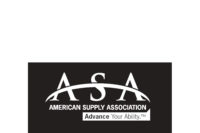
The ASA Education Foundation's newest project, "Essentials in Profitable Distribution," is a book/ workbook designed to help your employees understand what the distribution business is and isn't. It will explain to them the principles of wholesale distribution, and how business expenses comprise (eat up) most of what is traditionally referred to as "mark-up."
Every distributor, at one time or another, has had to explain to an employee that just because it was bought for $1 and sold for $3 that the profit was NOT $2!
The new ASAEF book is designed to tackle that age-old misconception, as well as explain in easy-to-understand terms, what value a wholesaler provides in the channel, and how every employee can contribute to the company's profitability.
Here are a few excerpts from the new book:
From "Wholesaler Profit Margins":
"What's been described thus far is a simplified explanation of the business of wholesale distribution. Making money in the business requires a set of skills not everyone possesses. It requires a keen instinct of what products to buy, who to buy from, when and in what quantities. Wholesalers must know their customers and which products they favor. Wholesalers must evaluate manufacturers for the quality of their products and their reliability as business partners. Buy too little, and customers will stay away from a supply house because it doesn't have what they need when the need it. Buy too much, and money gets wasted on inventory that sits on the shelf too long ..."From "How Wholesalers Make Money":
"In this chapter you will learn to:
- Define gross profit, gross margin and mark-up.
- Calculate gross profit, gross margin and mark-up.
- List the major operating expenses of PHCP wholesaler-distributors.
- Calculate the "bottom line" of a business.
- Describe the role of profit in a business.
- Identify four key areas of management concern for a wholesaler.
Expenses
Whether a wholesaler does $1 billion in annual sales or only $1 million the vast majority of its revenue will be absorbed by business expenses.
Expenses fall into two separate categories. Direct cost pertains to the expenses that can be precisely measured for a particular transaction. In PHCP distribution, the main direct cost is the cost of goods sold (COGS). For instance, a distributor may buy an industrial valve from a vendor for $150 and sell it to a customer for $200. That distributor gained $200 in revenue, but incurred $150 in COGS."
I think you get the picture. In simple terms, the book is being written to help wholesalers and others convey to their employees ten powerful lessons about PHCP distribution. The ten chapters are entitled:
- Wholesale Distribution and its Role in Our Economy
- Development of the PHCP Industry
- The PHCP Channel of Distribution
- How Wholesalers Make Money
- More Ways to Increase Profits
- Pricing - An All-Important Business Strategy
- What Happens to Profits When You Cut Prices
- Sales and Marketing in Distribution
- Delivering Great Customer Service
- You Make the Difference
The book is brand-new and authored by Jim Olsztynski, who is also Supply House Times' managing editor. Jim's many years in the business, combined with his writing skills, make him uniquely qualified to work with the ASA Education Foundation on this new book.
"Essentials in Profitable Distribution" will make its debut in a "Train the Trainer" forum during the upcoming ASA program. Dr. Kathryne Newton from Purdue University will lead this program in Toronto, giving wholesalers and others valuable instruction on how to use this tool to its best advantage.
Visit the ASA Education Foundation's website for more information (www.asa.net/education) or call 312/464-0090.
From Margin vs. Mark-Up:
Gross margin is a key measurement to wholesaler-distributors. It tells them, in essence, whether they are buying low enough and selling high enough to make money. A 25% gross margin, averaged out across all transactions, is about the norm for PHCP wholesaler-distributors. Firms doing better than that are likely to be very successful.A third term you will hear frequently is "mark-up". Mark-up refers to the relationship between gross profit and the cost of the product. In our example, the COGS to the wholesaler was $150, while the gross profit was $50.
Mark-up is calculated by dividing gross profit by COGS. The mark-up on this valve was 33.3%. The wholesaler marked it up by a third in relation to his cost, but realized only 25% gross margin in relation to sale price.
The book will be a way to convince your employees that just because you bought it for $1 and sold it for $2, that you didn't make a $1 profit.


